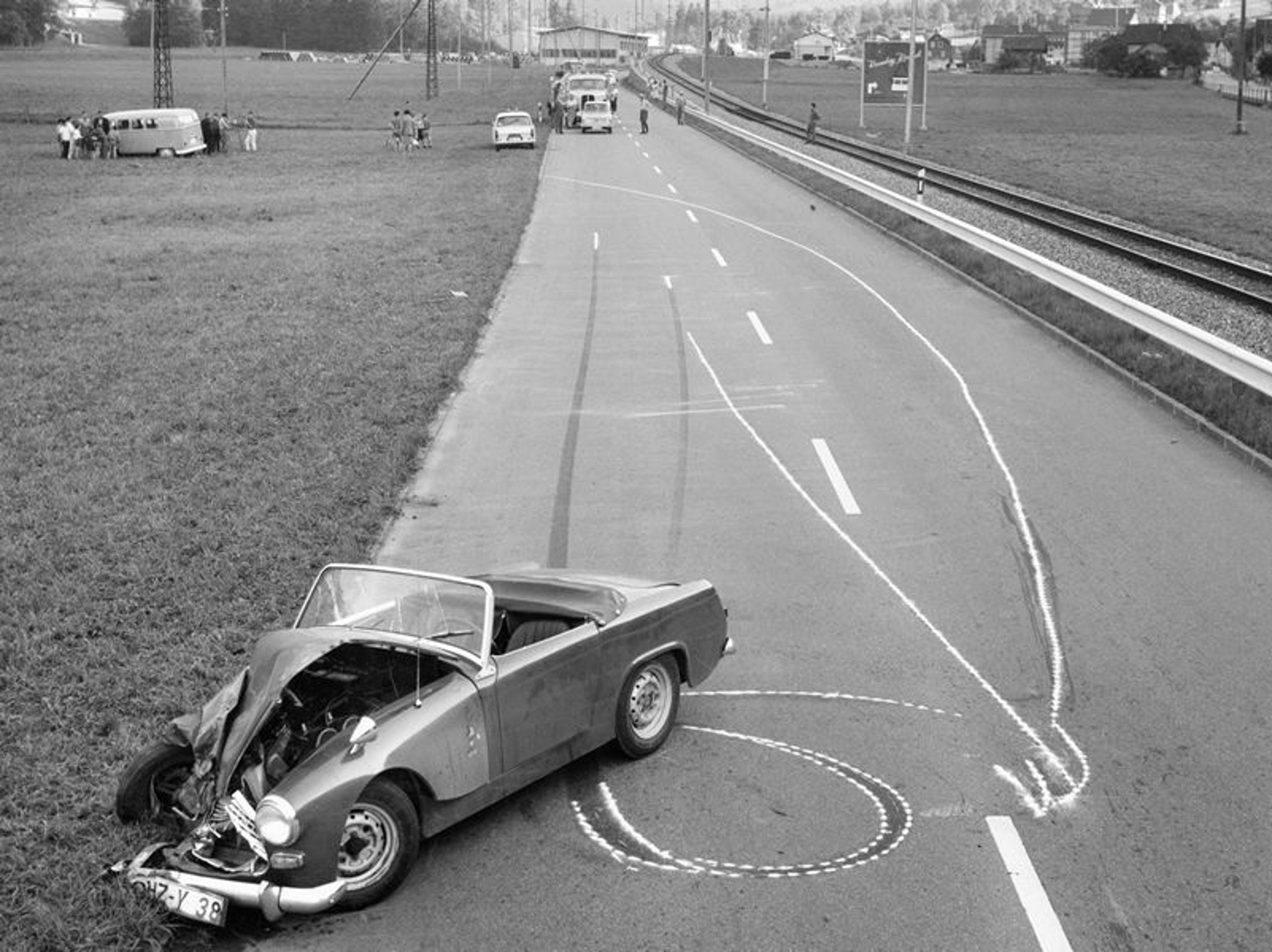If Andy Warhol had known his contemporary, Arnold Odermatt,
it might have alleviated a certain frustration the former was experiencing.
"I've met a lot of cops recently," commented Warhol in 1963. "They
take pictures of everything, only it's almost impossible to get copies
of them."
From 1948 to 1990 Odermatt was employed as a traffic policeman in the
Swiss canton of Nidwalden and took hundreds of photographs, mainly of
his fellow workers and of the the towns and countryside where he worked
and still lives. Surrounded by mountains and a large lake, Nidwalden
was a fairly isolated place until 1976, when a major tunnel and bridge
were built.
As a result, Odermatt's photographs bear witness to an environment gradually
coming to terms over the years with various degrees of encroaching modernity.
Roads figure prominently: snowy lanes and wet streets contrast with bright
new highways, which appear like fresh scars across valleys and forests,
slicing through picturesque village that huddle on the shores of photogenic
lakes beneath leaden skies. These scenic detours, however, more often
than not lead to the end of the road: a car crash.
Arriving at the scene of an accident, Odermatt would take one set of photographs
for the insurance or police reports, and then take another for himself.
His reasons for doing so are mysterious, but the results are often strangely
beautiful.
Unlike the photographs of, say, Weegee or Mell Kilpatrick, in which stoic
cops and horrified bystanders are pictured dealing in different ways with
the reality of sudden injury or death, Odermatt empties the image of everything
but the forlorn wreck and the landscape in which it came to rest: a crumpled
car floats in a glassy lake beneath the Alps; a couple of abandoned shells
tenderly touch bumpers on a charming wintry lane; an upturned VW Beetle
reclines on the edges of a still river.
Despite the often disturbing evidence of injury, there is something oddly
calming, even restorative, about these modest images, most of which are
black and white. Odermatt scrutinizes surfaces like a sculptor on a budget;
he has a canny eye for maximum visual impact with the most economical
means. Denied movement and passengers, cars are reduced to the sum of
their material parts; as devoid of horror as a log. Yet despite the crisp
elegance of their composition, the pictures make apparent, in the most
straightforward way, how life can be at once very strange and very ordinary
– and how, by association, death is no different.
– extracted from an article in Frieze Magazine, Issue 73, March 2003.
A large series of these photographs were exhibited in Krakow Poland, during Photomonth 2009.

Feature
Karambolage (Smash-up)
Arnold Odermatt was a police photograper in a small Swiss canton for more than 40 years. He often took two sets of photographs at the scenes of accidents: one standard shot for the police, and more artful photographs for his own collection.
View Images
Feature
Karambolage (Smash-up)
Arnold Odermatt was a police photograper in a small Swiss canton for more than 40 years. He often took two sets of photographs at the scenes of accidents: one standard shot for the police, and more artful photographs for his own collection.
Karambolage (Smash-up)
Arnold Odermatt was a police photograper in a small Swiss canton for more than 40 years. He often took two sets of photographs at the scenes of accidents: one standard shot for the police, and more artful photographs for his own collection.

